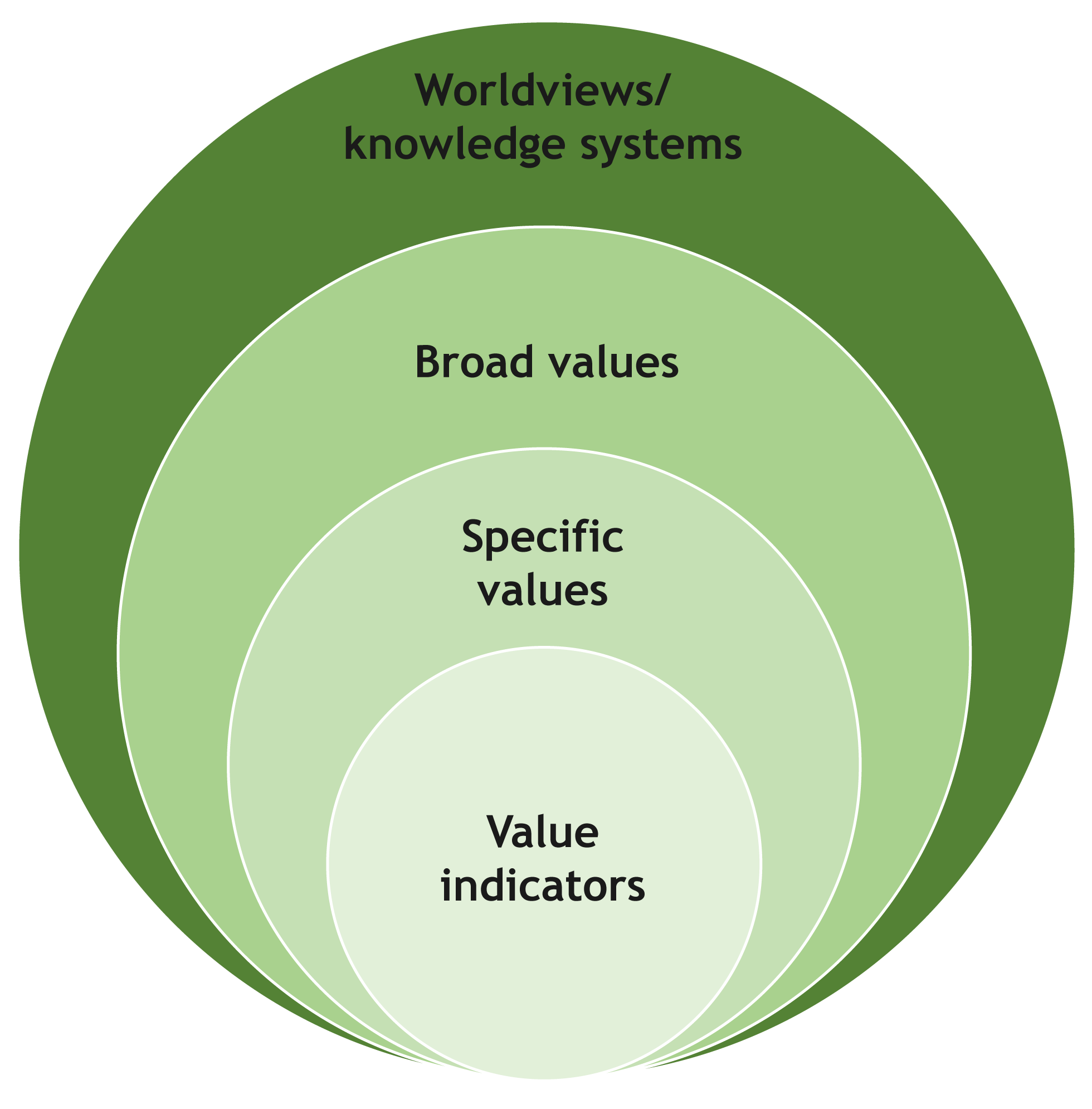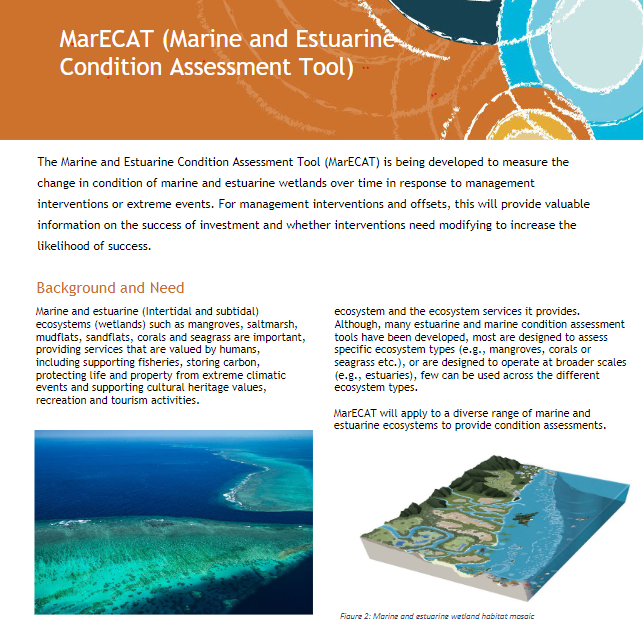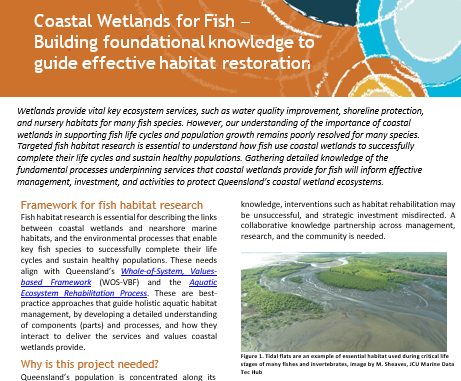|
|
WetlandUpdate April 2023MarECAT project fact sheetThis fact sheet provides information about MarECAT (Marine and Estuarine Condition Assessment Tool) which is a rapid assessment tool for measuring the change in the condition of marine and estuarine ecosystems in response to management interventions.
Coastal wetlands for fish fact sheetThis fact sheet provides information on a project which will link fish habitat research with the logic of the Whole-of-System, Values-Based Framework and Ecological Constraint Mapping for fish. The project will synthesise information on the use of inshore habitats by key fish species and will connect fish habitat use with processes that support the lives the key fish species.
Values page
A page that describes why values are important, how values are formed and how values are categorised has been added to the Wetland services and values section. This update links to other pages such as Wetland Services and Beneficiaries and Stakeholders.
Updates to Education ModulesThree Education Modules have been updated - Aquatic Conservation Assessment using AquaBAMM, Deriving benefits and services from wetlands and Why are wetlands imporant?. The Aquatic Conservation Assessment using AquaBAMM – Education module was reviewed and updated to recognise the completion of ACAs around the State and the commencement of the Queensland Great Barrier Reef connecting catchments (GBRCC) project. The Deriving benefits and services from wetlands – Education module was reviewed and updated to align with the recent work on Values and Services, and to link in with the Whole-of-System, Values-Based Framework. The Why are Wetlands important? – Education module has had minor updates to align with recent work on Values and Services. UpdatesUpdated layers on WetlandSummary
Updated SDAP GuidelinesTwo SDAP guidelines were added to the State development assessment codes page which provide advice for a development application under the Planning Act 2016 for the removal, destruction or damage of a marine plant and constructing or raising a waterway barrier. Additional links
WetlandUpdateThe WetlandUpdate is a regular bulletin sent to subscribers to provide you with the latest WetlandInfo resources and tools, as well as case studies, video information and new project fact sheets. WetlandInfo feedback and improvementsContact us via email for feedback, information or questions about wetlands. WetlandInfo feature species
Platypus (Ornithorhynchus anatinus), Broken River, Eungella National Park. Photo by Gary Cranitch © Queensland Museum
The feature species for March is the Platypus (Ornithorhynchus anatinus). The platypus (Ornithorhynchus anatinus) is one of Australia's most unique species. They are one of only two egg-laying mammals. Females lay two eggs in a nursery burrow, which then take two weeks to hatch. They spend part of their life in water and part of their life on land and are endemic to Eastern Australia. Platypus are covered in dense, waterproof fur and have a broad, flat tail. They move in water by using their front, short, webbed limbs, which can also be used for burrowing on land. Behind their bill are grooves that house ear openings and their tail is also used as a fat reserve. Male platypus have a horned spur on their ankles which is connected to a venom gland in the upper leg - making the platypus a venomous mammal. Platypus are dependent on rivers, streams and other freshwater bodies of water, and can be found in urban and agricultural landscapes. They are active mostly during early morning, twilight and night, and shelter during the day in burrows. Platypus use sensory organs in their bill to detect prey, which includes larval mayflies, caddisflies and small molluscs. They can move through fast through waters at speed (around 1 metre per second) but move slower when foraging. Additional informationThis section is updated regularly, so stay tuned for more!Last updated: 30 March 2023 This page should be cited as: Department of Environment, Science and Innovation, Queensland (2023) WetlandUpdate April 2023, WetlandInfo website, accessed 18 March 2024. Available at: https://wetlandinfo.des.qld.gov.au/wetlands/resources/publications/latest-news/2023-03-28.html |

 — Department of Environment, Science and Innovation
— Department of Environment, Science and Innovation



